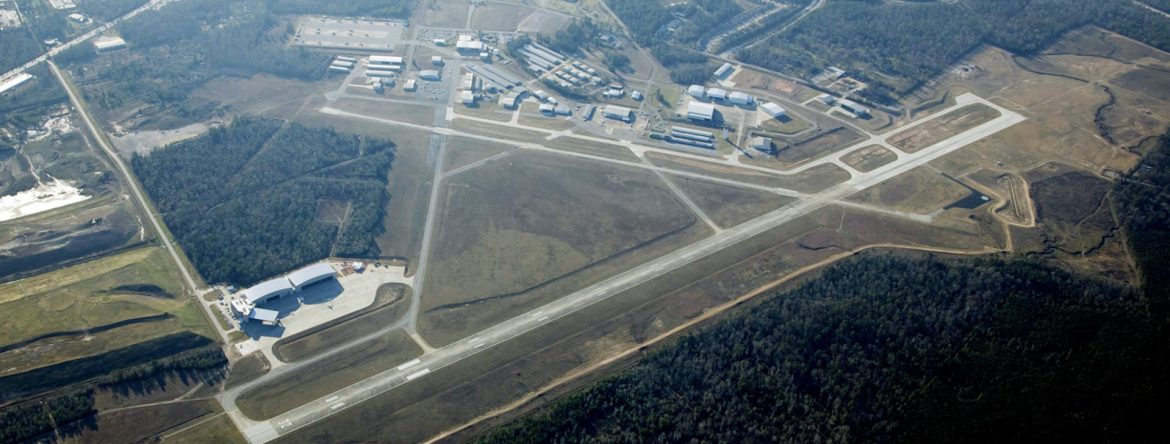Conroe-North Houston Airport
Making a Big Impact
Serving its passengers and the great state of Texas fueled by a host of initiatives taking off
The largest city in the Lone Star State, Houston, has always had a significant economic impact on its oil-rich region and beyond. Serving as a gateway to this majestic city and the surrounding state is the Conroe-North Houston Regional Airport.
Located in the Houston suburb of Conroe, not 40 miles from the former city’s downtown business district, the airport predates World War II and has a long history of making positive things happen for the Texas economy.
We recently spoke with Conroe-North Houston Regional Airport Director James Brown, and he told us more about what makes this flight facility so special.
The airport plays host to more than 300 aircraft, 240 hangars, a control tower, two FBOs (or fixed-based operations), a general aviation terminal building, a U.S. Army Reserve Aviation unit (the First Battalion, 158th Aviation Regiment is stationed at the base), more than 20 businesses and several government agencies as well, as Brown informs.
“We’re a little bit of a unique airport,” he shares, explaining that in 1945, the airport was converted primarily to civilian use. “We were not a surplus airport.”
He adds that the airport—situated on more than 1,300 acres, at an elevation of not quite 250 feet—grew from humble beginnings as a small airstrip during the Great Depression, not 90 years ago. Montgomery County purchased it from a private owner, working with the CAA (or Civil Aeronautics Authority, the predecessor of the Federal Aviation Administration or FAA) to augment the facility and build up its runways.
 Beginning in 1944, the United States Navy leased the airport, citing its potential strategic importance in the defense of Houston and Port Arthur. After the war, the Navy canceled its lease, and the airport continued to grow, as Brown relays.
Beginning in 1944, the United States Navy leased the airport, citing its potential strategic importance in the defense of Houston and Port Arthur. After the war, the Navy canceled its lease, and the airport continued to grow, as Brown relays.
As the director, Brown’s role is all-encompassing. Included in his duties are the overall development, maintenance, and administration of the airport.
He also spoke of the two FBOs: Galaxy FBO and the General Aviation Jet Center (a decades-long airport fixture). Galaxy is the newer kid on the runway, having started in 2015. Both FBOs are well known as excellent benchmarks of the aviation industry.
They offer first-rate amenities, including transient hangar and tie-down options; rental car and limousine service arrangements; and catering and crew comfort areas. Plus, both FBOs also offer service and support for helicopter operations.
Brown lauded the Montgomery County Commissioners for their commitment to the airport and its infrastructural improvements.
“Our county commissioners are taking a really good, forward-looking approach,” he says, continuing, “We’ve added a lot of capacity. We’ve extended our runway.”
That 1,500-foot extension was completed by Webber, LLC (a firm specializing in heavy civil construction) in 2014, bringing the main runway’s length to 7,501 feet to accommodate larger aircraft and better serve Montgomery County residents, thus having quite a beneficial local economic impact.
Also, a part of this project (which had a price tag of some $20 million) was the construction of a new taxiway on the airport’s west end. The project’s funding was made possible by the Airport Improvement Program from the Airport Improvement Administration, which provides grants to airports to facilitate their capital improvement projects. The Texas Transportation Commission approved the grant, and then the Texas Department of Transportation Aviation Division managed the grant and subsequent construction.
Other improvements include the addition of parallel taxiways to increase runway capacity, as Brown points out.
“We’ve done a lot of reconstructing of our runways and taxiways to increase our weight limit,” he adds, “and that all coincided with the growth and development of larger aircraft. Then, the icing on the cake was adding U.S. Customs.”
Plus, there are many future projects. Citing just one example, right now, says Brown, efforts are underway to re-mark the runways.
“We’ve got another project slated to reconstruct some older taxiways to bring those weight limits up, as well as a little bit of a higher standard,” he adds, also citing repaving some of the airport’s parking aprons and older taxiways.
Learning to fly
In many ways, Texas is synonymous with aviation. Brown says there are quite a few flight schools in the region. Among them is the American Flyers Flight Academy in Conroe. The academy also has two locations in Addison, some three hours northwest of Conroe.
Other such schools include Flight Safety International, the Flying Tigers Flight School, the Aviation Institute of Maintenance, Harco Aviation, LLC, Sterling Aviation Early College High School, Starflight Aviation, and United Flight Systems, Inc. All of them are located in Houston.
Once their training is completed (in as little time as two months or as long as six years, depending on the program), flight-school graduates will almost immediately find paying gigs with airlines, as Brown points out.
Talking of which, he also addressed the uniquely modern problem of North America’s ubiquitous pilot shortage. During the COVID pandemic, many pilots of a certain age and seniority simply opted to take early retirements. This has resulted in a dearth of more experienced pilots and a glut of inexperienced pilots trying to get their collective foot in the cockpit door.
Brown notes that being a pilot has age limits and health requirements. He adds that you can spend $70,000 to $100,000 to get a pilot’s license, but then,“One health issue and your career is over. I think it’s one of those things that it’s hard for younger people to look at and say, ‘Hey, that’s a career I want to get into.’”
Of course, there are other non-flying options for those who have health problems. Management is one, as Brown helpfully points out, and being an air traffic controller is yet another.
He also extols colleges and universities that have flight schools. An aviation degree can be an invaluable asset.
 More about Brown
More about Brown
As he happily notes, Brown has been in the aviation business for nearly two decades.
It was from his namesake great-grandfather that he acquired his passion for aviation. The late Mr. Brown was a World War II veteran of the United States Army Air Corps: the precursor of today’s separate branch, the U.S. Air Force. During high school, young James Brown also wanted to join the Air Force. Instead, however, he eventually went to work for a defense contractor specializing in avionics (a combination of aviation and electronics).
Sometime later, he found himself working for Boeing IDS (or integrated defense systems) for two years. Yet Brown wanted something that would allow him more family time, and so he opted for a job as a maintenance technician at the New Braunfels National Airport, some 200 miles from Conroe.
Working his way up, he soon became a supervisor. He then took a position as the manager of Coulter Field, an airport in Bryan, Texas, for more than five years. That eventually led to the Conroe-North Houston Regional Airport, where he has been at the helm for the past seven years.
Brown again mentioned the Montgomery County Board of Commissioners and other local elected officials, as well as the Conroe Economic Development Council. He expressed his sincere gratitude to them all for their airport-related advocacy.
“Without their support, we wouldn’t be able to do the projects that we’ve done to grow the airport to where we are,” he says, likewise extending thanks to “the other local communities around us who support us, whether it be through the local agreements or funding agreements, U.S. Customs and all the communities within Montgomery County, the City of Conroe, the Woodlands Township, the City of Shenandoah, the City of Magnolia—all of these communities support the airport and play a role.”
He turned again to the Conroe EDC.
“They do see the economic benefits of the airport,” he added, praising their ability to bring in not only new tenants to the airport but also large-scale economic development to Conroe and the wider Texas business community beyond, including major companies that have their flight departments to transport both cargo and executive leadership personnel.
Brown also emphasizes the importance of ongoing growth in the greater Houston metropolitan area, which is one of the top 10 fastest-growing regions in the country. Looking to the future, he says that’s one thing that definitely won’t be slowing down.
“We are hoping to see more of corporate development expanding,” he says, as well as more hangar development at the airport.
Closer corporate cooperation is the name of the game when it comes to success in business. The Conroe-North Houston Regional Airport is all about facilitating this, says Brown. It’s a facility that quite literally means business.
AT A GLANCE
Conroe-North Houston Regional Airport
What: a public-use, regional airport that is nestled deep in the heart of Texas
Where: Conroe, Texas
Website: www.lonestarairport.com
PREFERRED VENDORS
Hollaway Consulting Engineers, LLC – hollawayconsultingengineers.com
Hollaway Consulting Engineers focuses on aviation construction management, contruction inspection as well as QA/QC and constructibility reveiws. HCE provides engineeing consulting on specialty projects for researching and writing grants, Part 139 Feasibility Studies, pavement studies, budgeting estimates for construction, and verification of local material availibility. HCE is certified DBE, HUB and SBE.
Conroe Economic Development Council (CEDC) – www.conroeedc.org
The Conroe Economic Development Council (CEDC) plays a vital role in enhancing the Conroe economy through industry support and business attraction. Their highly qualified team assists with site selection, permits, incentives, and offers ongoing support through the Business Retention and Expansion program. Additionally, they aid industry groups, infrastructure projects, networking, and job placement. The CEDC is a key driver of Conroe’s economic success.
St. Luke’s Health – www.stlukeshealth.org
St. Luke’s Health is part of CommonSpirit Health, a nonprofit, Catholic health system dedicated to advancing health for all people. St. Luke’s Health is on a mission to enhance community health through high-quality, cost-effective care.






